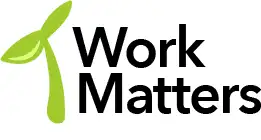
Employer Branding
Employer Branding
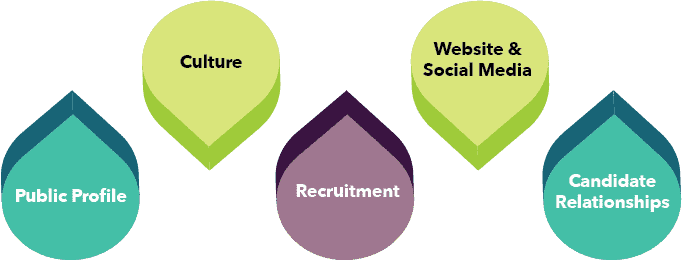
Stand Above the Rest
When we think of branding it’s generally on the consumer side. What does your company look like to those you’re trying to sell to and why should they choose your product? This is a crucial part of a company, however what’s often forgotten is branding yourself as an employer. Employer branding refers to how you market your company to employees and job seekers. You need to know who you’re marketing to, what you want your brand to be and what your employee or candidate value proposition is.
“Employee Value Proposition is a unique set of offerings and values that positively influence targeted candidates.” – Talent Lyft
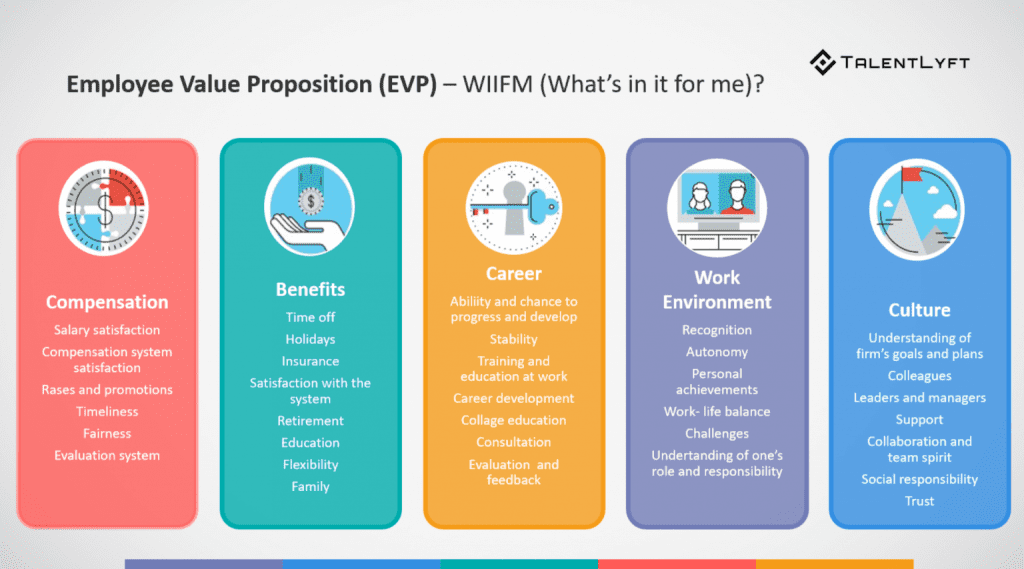
Having a unique Employee Value Proposition (EVP) is an essential stage in marketing your business to job seekers and your employees alike.
Proper employer branding leads to higher retention and higher quality applicants to open positions. Employer branding can be everything from your job postings to your company culture. What’s important is that you have an established, positive employer brand that is continuously monitored and updated. A crucial element is transparency and authenticity in all that you communicate.
Public Profile

Employees and applicants are going to view your company through both lenses, consumer and employee. Are they buying into what you sell? They will look for awards and accomplishments and industry recognition. This includes awards for best managed company, best place to work and evidence of community engagement. Indeed and Glass Door are the Yelp of the workforce. Do you know your reviews? Make sure to track your company on these platforms and constructively respond to both positive and negative reviews. You can’t control what everyone thinks and says but you can influence it. The key to your public profile is maintaining an active, mobile friendly career page and properly leveraging social media. This will be discussed in more detail later on.
Culture

Values
What does your company stand for? Who are you, what are your values and how do you make a difference in the world? This is what job seekers of today want to know. Craft a living, breathing Vision, Mission and Values (VMV) Statement that has been designed with employee input. It can go a long way to establishing your values and your overall workplace culture. Your VMV should be reviewed at least annually.
Retention
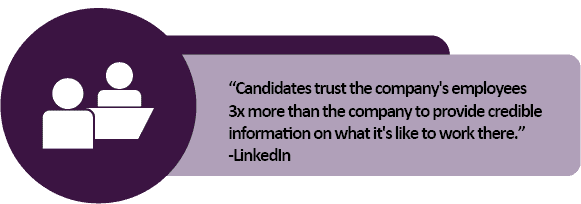
Retention should be just as important as hiring in your organization. Engaged employees will not only save you the costs of onboarding but will act as an employer ambassador to the world around them. The public will trust the word of an employee over an organization any day so make sure your employees have genuinely positive views about your company. Not sure where you stand with your employees? Consider performing an internal, anonymous audit to ascertain your employees’ opinions. Some HRIS systems such as Bamboo HR have features to perform these audit. You may not be where you want to be, but the only way to get there is through continuous learning. Complete a SWOT analysis (strengths, weaknesses, opportunities and threats), create a plan and build a continuous learning model. Constantly review and adapt this as your business progresses
Recruitment
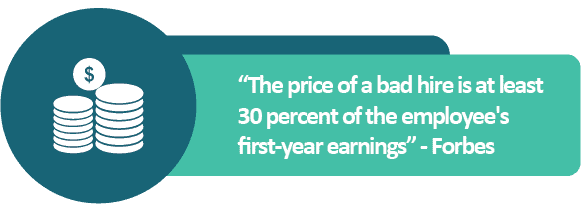
When you’ve established a positive employer brand it makes attracting and retaining employees more strategic. This should help find your ideal fit candidates. Take the time to find the right fit as it is much more costly from a recruiting, onboarding, employee morale, production and offboarding standpoint. We will be discussing onboarding, offboarding, etc in future posts.
Job Listings

Writing a good job listing is a crucial step in attracting high quality talent. Job listings should be specific and to the point. Avoid gendered or overly complex language to promote diverse applicants. Rethink focusing on experience and look more for relevant skills. Job listings are also an excellent place to sell your business to job seekers. Don’t just focus on what you’re looking for, write about what you can offer, such as culture and social impact. A job listing is a marketing tool with key points from the job description, not a job description itself. Your job listing should be engaging. Be creative and consider using videos.
Ensure you’re posting your job listings in the right places. Some examples where companies have found success are Glass Door and Zip Recruiter. Track your responses in each job board or social media platform to ensure you’re investing in the right places. Meaningfully reflect on where you’re posting and why you’re posting there.
Employee Referrals

This is one of the easiest strategies to develop your talent pipeline. Employee referrals have the shortest onboarding time of any recruitment, generally have a higher retention rate and are the least expensive recruitment method. Employee referral is asking your own employees to help you find talented candidates. The key is:
- Creating an employer brand your employee wants to share.
- Developing a referral program so employees want to refer others.
- Choosing meaningful rewards tailored to the individual.
- Onboarding the referred employee in a manner that is reflective of your brand
- Checking in with both the referring employee and the referred employee throughout the process
- Continuously review your referral program so it doesn’t become stagnant
Content Recruiting (Inbound Recruiting)
Create content to create a talent pipeline. Engage potential candidates through workshops, webinars, blogs and other relevant and useful content to develop longterm relationships with those that will be the right fit down the road. Share this content on social media and through your career pages. The purpose of the content is to create interested candidates. Create opportunities for future candidates to engage with you before you’re stuck with a difficult to fill position.
Video Advertising

This is a relatively new market for recruiting. Businesses have been using video to market to consumers for years, however the opportunities to reach millennial and generation Z workers in their preferred medium can’t be underestimated. You can use video to show rather than tell about your workplace culture. Employee testimonials are key. Your videos can easily be shared on social media, foster greater engagement than traditional methods and create a call to action. The Work Matters project has created employer videos as a sampling that will be premiered at the Summit and Showcases.
Networking
Create opportunities to engage with candidates. This can be done in two ways.
- Outbound networking. You attend someone else’s event. Attending conferences, workshops, networking events, professional associations, virtual events, etc.
- Inbound networking. You create the event. Workshops, community events, volunteer opportunities, etc.
Make sure the point of contact at networking opportunities is somebody comfortable with promoting your employer brand. They should be prepared with an elevator pitch on your company and the jobs that are available.
Co-ops

Co-ops are a great way to incorporate the next generation of workers into your workforce. This creates a bridge between current students and employers, allowing for a knowledge exchange. Co-ops alternate between in-class instruction and paid work. This can be especially valuable in verifying fit before committing a role to a recent graduate. Reach out to your high schools, colleges and universities. This doesn’t have to be regional. Consider connecting with colleges and universities across the country. This is another great way to develop your talent pipeline. Check out the co-op video at the Showcase.
Website & Social Media

Once you’ve established your corporate culture it’s time to show it off! Through your social media presence and website demonstrate what it’s like to work at your company. Consider making your website mobile friendly for added traffic, especially from the millennial and generation Z demographics. It’s also worth considering creating a separate social media page for job seekers and employees. This is leveraged by top Employers of Choice to tailor content to top talent. Post content that gives a true picture into what it’s like to work at your company. Encourage your employees to write reviews or even record testimonial videos. Ensure you’re regularly updating your online presence. Out of date information is worse than no information at all.
Candidate Relationships

It’s important to build a candidate relationship even before your formal relationship begins. Statistics show candidates are very likely to research your company before applying so it’s crucial to leave a positive impression. This includes diversity and inclusivity. Show respect for your candidates by keeping them informed throughout the recruitment process. Sometimes its just a matter of creating emails to keep them engaged. Consider using a Human Resources Information System (HRIS) to assist with this. Allow your candidates to meet with employees in a peer-to-peer interview to begin building relationships. Listen to your employees valuable feedback on best fit. Ensure the individuals interacting with candidates are inspiring ambassadors for your company. Maintain relationships with unsuccessful candidates as they can potentially be a great fit down the road, creating a talent pipeline.
Resources
https://www.bamboohr.com/blog/how-to-recruit-a-diverse-workforce/
https://www.navigarecruiting.com/5-ways-to-attract-top-candidates-to-your-open-positions/
https://www.roberthalf.com/blog/management-tips/effective-employee-retention-strategies
https://www.glassdoor.com/employers/blog/how-to-build-an-employer-brand/
https://www.glassdoor.com/employers/blog/the-roi-of-employer-branding/
https://www.glassdoor.com/employers/resources/employer-branding-101-why-how-and-proven-roi/
https://www.talentlyft.com/en/resources/what-is-employee-value-proposition-evp



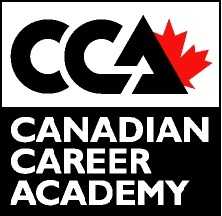

Who We Are
We are an Employment Ontario funded project designed to bring together job seekers, incumbent workers, employers, and community partners to develop and improve Human Resources and recruitment practices in Lanark and Renfrew Counties.